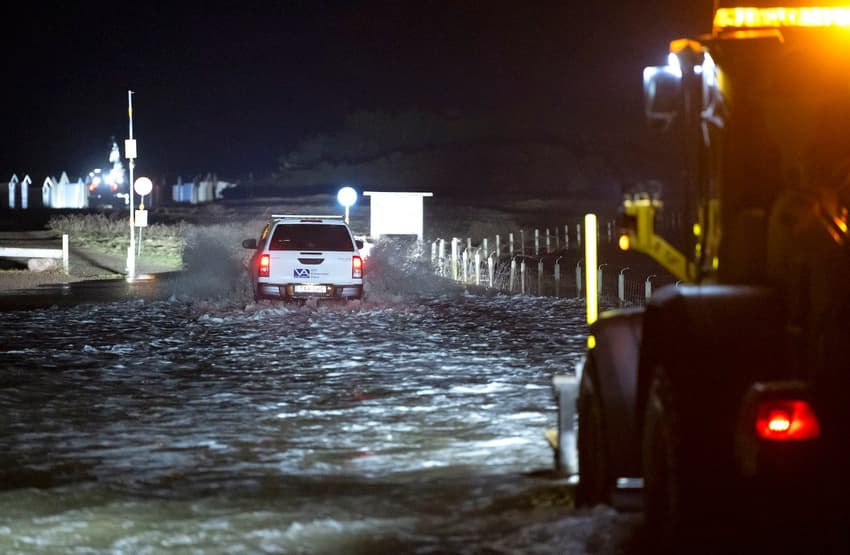Why southern Sweden could see record-high water levels this weekend

Serious flooding is in store for Sweden's southern coast this weekend, the country's weather service warns, as water levels continue to rise. Some areas could see their highest water levels since the 1990s.
Sweden's Meteorological and Hydrological Institute, SMHI, has issued an orange warning for high water levels along the southern coast from Friday night and throughout Saturday.
Serious flooding is possible, which may cause road and rail closures.
Harbours and coastal buildings also risk damage and ships may be unable to moor in certain harbours, and any boats which are already moored could be damaged. There is also a risk of erosion damage, the institute warns.
On the Scanian coast between the Öresund bridge and Ystad, water levels could break records, according to on-duty oceanographer Sofie Schöld at SMHI.
"It's going to be especially high on the Skanör-Falsterbo peninsula, and a bit lower towards Ystad," she said.
Water levels in that area are forecast to be around 130 to 160 centimetres above the norm. Skanör's current record, set at the beginning of the 90s, is 154 centimetres.
"It could be a record, but we can't say for certain right now. We'll have to wait and see what the situation looks like on Saturday morning, but it's definitely close to record levels," Schöld said.
The high levels are due to westerly winds pushing lots of water into the Baltic sea, which is quite common for this time of year.
However, winds over the Baltic have now changed so they're blowing northeast. This means that water from the lower half of the Gulf of Bothnia, which lies between Sweden and Finland, has been pushed into the Baltic.
These winds are expected to become stronger on Friday and into Saturday while also blowing inland, leading to water levels rising even more, especially in the south.
"It's being pushed into the southern parts of the Baltic and getting trapped slightly in the Öresund. That's why it keeps rising, it's not as easy for the water to flow out again," Schöld said.
Comments
See Also
Sweden's Meteorological and Hydrological Institute, SMHI, has issued an orange warning for high water levels along the southern coast from Friday night and throughout Saturday.
Serious flooding is possible, which may cause road and rail closures.
Harbours and coastal buildings also risk damage and ships may be unable to moor in certain harbours, and any boats which are already moored could be damaged. There is also a risk of erosion damage, the institute warns.
On the Scanian coast between the Öresund bridge and Ystad, water levels could break records, according to on-duty oceanographer Sofie Schöld at SMHI.
"It's going to be especially high on the Skanör-Falsterbo peninsula, and a bit lower towards Ystad," she said.
Water levels in that area are forecast to be around 130 to 160 centimetres above the norm. Skanör's current record, set at the beginning of the 90s, is 154 centimetres.
"It could be a record, but we can't say for certain right now. We'll have to wait and see what the situation looks like on Saturday morning, but it's definitely close to record levels," Schöld said.
The high levels are due to westerly winds pushing lots of water into the Baltic sea, which is quite common for this time of year.
However, winds over the Baltic have now changed so they're blowing northeast. This means that water from the lower half of the Gulf of Bothnia, which lies between Sweden and Finland, has been pushed into the Baltic.
These winds are expected to become stronger on Friday and into Saturday while also blowing inland, leading to water levels rising even more, especially in the south.
"It's being pushed into the southern parts of the Baltic and getting trapped slightly in the Öresund. That's why it keeps rising, it's not as easy for the water to flow out again," Schöld said.
Join the conversation in our comments section below. Share your own views and experience and if you have a question or suggestion for our journalists then email us at [email protected].
Please keep comments civil, constructive and on topic – and make sure to read our terms of use before getting involved.
Please log in here to leave a comment.